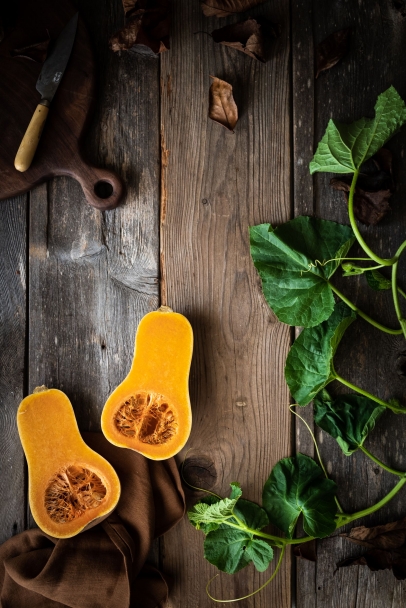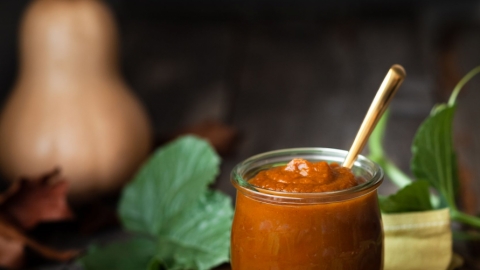Falling for Squash
There is one vegetable I never seem to have enough room for in my garden. With their sprawling vines and umbrella-like leaves, is it any wonder that squash never seem to fit their allotted space? It’s not really an issue though, because I adore everything about this perfect fall food; accommodating them in my garden is one of my life’s priorities.
Factually speaking, squash are not true vegetables; rather, they are the fruiting body of an herbaceous plant belonging to the genus Cucurbita (a subgroup of the gourd or Cucurbitaceae family). The word “squash” is derived from the Narragansett word “askutasquash,” which translates to “a green thing eaten raw.” This translation might seem unfitting when you consider our modern squash varieties, but Cucurbit domestication dates back 8000–10,000 years based on current archaeological evidence from Oaxaca, Mexico. Early squash cultivars were an integral food for Meso American and First Nations populations spanning all the way from South America to the southern regions of Canada.
Through centuries of domestication, over one hundred estimated types of squash are currently grown and consumed all over the globe, with modern culinary varieties belonging mostly to three main groups: Cucurbita maxima, Cucurbita moschata and Cucurbita pepo. These groups include what are commonly referred to as “summer” and “winter” squash. Summer squash include varieties like zucchinis (courgettes), crooknecks, straightnecks and patty pan. These squash are harvested and eaten—as their name would imply—during the summer when their edible skins and seeds are soft and immature.
Deceptively, winter squash are actually harvested at maturity in the fall; the name actually comes from their ability to withstand storage over the winter months due to their thicker skins. In general, the most common varieties available include acorn, butternut, sugar pumpkin, delicata, spaghetti, kabocha and red kuri. However, farmers’ markets are a great place to source uncommon and enchanting heirloom specimens like Blue Hubbard, Long Island Cheese, Musquee de Provence, and or Rouge Vif d’Étampes (Cinderella pumpkins).
The flavours of winter squash can vary from mild, sweet or nutty, making them easy to incorporate into sweet or savoury dishes and tossed with  an array of spices like cinnamon, nutmeg, cumin, curry, sage or thyme. However, not all winter squash can be used interchangeably, as water and sugar content play a role when selecting the appropriate variety for a recipe. While almost all squash and their seeds can be seasoned, roasted and enjoyed as is, varieties containing less water (like sugar pumpkins, cheese squash and butternuts) are better suited for pies, purées or butters, which can be dolloped onto scones and waffles, stirred into yogurt, blended into smoothies or whisked into creamy lattes.
an array of spices like cinnamon, nutmeg, cumin, curry, sage or thyme. However, not all winter squash can be used interchangeably, as water and sugar content play a role when selecting the appropriate variety for a recipe. While almost all squash and their seeds can be seasoned, roasted and enjoyed as is, varieties containing less water (like sugar pumpkins, cheese squash and butternuts) are better suited for pies, purées or butters, which can be dolloped onto scones and waffles, stirred into yogurt, blended into smoothies or whisked into creamy lattes.
When selecting squash, regardless of the variety, choose those that are free of blemishes or bruises; skins and stems should also be intact. Because of their awkward shapes, care should be taken when preparing winter squash for cooking. Of particular importance is creating a flat surface by first cutting off the stem and base to prevent rolling. Thereafter, it can carefully be cut into workable sections and peeled, if necessary. Pre-peeled and -cut squash can also be sourced.
If their beautiful shapes, variable flavours and multitudinous uses aren’t enough reason to love winter squash, they are also a good source of dietary fiber, B vitamins, vitamin C, folate, manganese, potassium and vitamin A.






